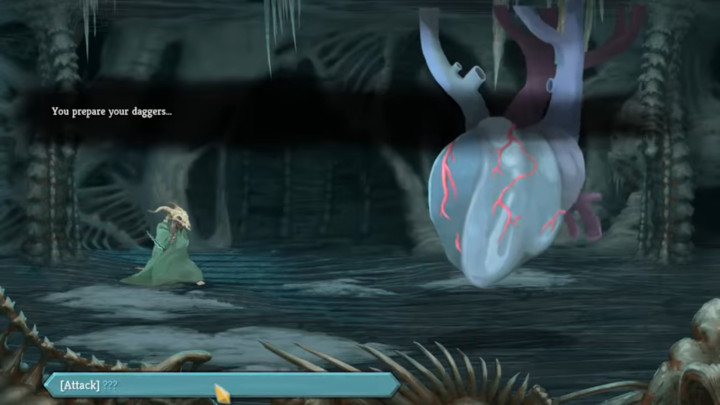
My friend Zach had been telling me about Slay the Spire for a while. One day, he finally just made me play it on his Switch, and I caught my new obsession.
One thing that helped is how immediately accessible it is. Cards start out simple. “Strike: Do 6 Damage, Defend: Block 5 Damage.” Easy enough. The cards get more complex as you go, but each card has just enough info for you to understand what it does. No card has more than four lines to explain it.
I started playing mostly with the Ironclad — the most straightforward character in the game. But incidentally, I won with the Silent (usually considered the hardest character to master) within just three runs. I also recognize that the Watcher is supposed to be overpowered, but I still had a hard time with her. So I had sort of an inverse experience compared to most people.
But that’s part of what makes this game so interesting. Every character has their own feel, so different players can have different experiences with them based on their own preferences and playstyles. Even when you do play multiple consecutive runs with the same character, every playthrough is different, and you can execute vastly different playstyles from run to run.

For example, if I play the Defect, I usually do a lot with stacking power cards that synergize with each other. One card makes it so I draw an extra card every time I play a power. Another card has me channel lightning orbs with every power. Conversely, you can cycle through 0 energy cards, and play a bunch of cards in one turn.
I know that description probably doesn’t make a lot of sense to someone who hasn’t played the game, and it’s probably not super compelling to read long descriptions about things like what a power is, what energy is, or what an orb is. So I’ll just skip all that and say that Slay the Spire has the essential quality of any deckbuilder — or any good roguelite, for that matter — which is synergy. When you have the perfect combo of cards, you can vastly change the outcome of a run, which is immensely satisfying.
You can make it so your defense also works as offense, and make your enemies take damage when attacking. You can combo cards so that you’re doing hundreds of points of damage from having a lot of strength or by upgrading cards a certain way. You can get a lot of energy and play a bunch of cards in one turn. You can sort of even “go infinite” and combo cards forever — or at least until you beat the current batch of enemies. Every run is different.

And to some extent, you need to work with the cards that the game gives you. You can usually choose between three cards after you beat any enemy, but you can’t go in expecting the game to go a certain way. I think that’s a good thing. Every run is a balance between the way you want things to go and the cards that are dealt to you.
You also have to be able to balance your deck between endgame and the obstacles you’ll encounter on the way. Some enemies are designed so that you have to kill them within a certain amount of turns, or you might have to have a lot of Block by a certain boss. If you don’t meet these requirements, you will die.

Outside of cards, there are also relics and potions, which will also alter how the game goes. Relics can do all sorts of good, from giving you extra energy, to allowing you to draw extra cards, to preventing damage on certain turns. These are passive abilities that are activated depending on the situation. Potions are one-time-use, but they can offer their own help, like giving you a chance to flee or healing you. At first, I wasn’t paying much attention to potions, but now that I am actively making use of them, they’ve absolutely saved my life at certain points.
There’s something intensely addicting about this game. I wasn’t really all that great at deckbuilding games before this, and I’m still not a pro (I’ve never “gone infinite” myself), but I feel like Slay the Spire is a really good primer. It teaches you intuitively about synergy. It never says, “these cards work well together,” but with enough playthroughs, you’ll learn which combos work for your playstyle. The game rewards strategic thinking, — in fact, it pretty much demands it.
I’ve beaten the Act 3 boss with every character, but I haven’t technically won the game yet, because I haven’t beaten the Corrupt Heart and truly slain the Spire. However, even beating the Act 3 boss requires grit. You essentially need to have a card combination that seems way overpowered, because every Act 3 elite enemy and boss is way overpowered.

Slay the Spire asks a lot of you, but when you actually get into the rhythm, it’s an endorphin rush on par with a Perfection in Halo, or a perfect score in Guitar Hero, or any other really big moment in video games.